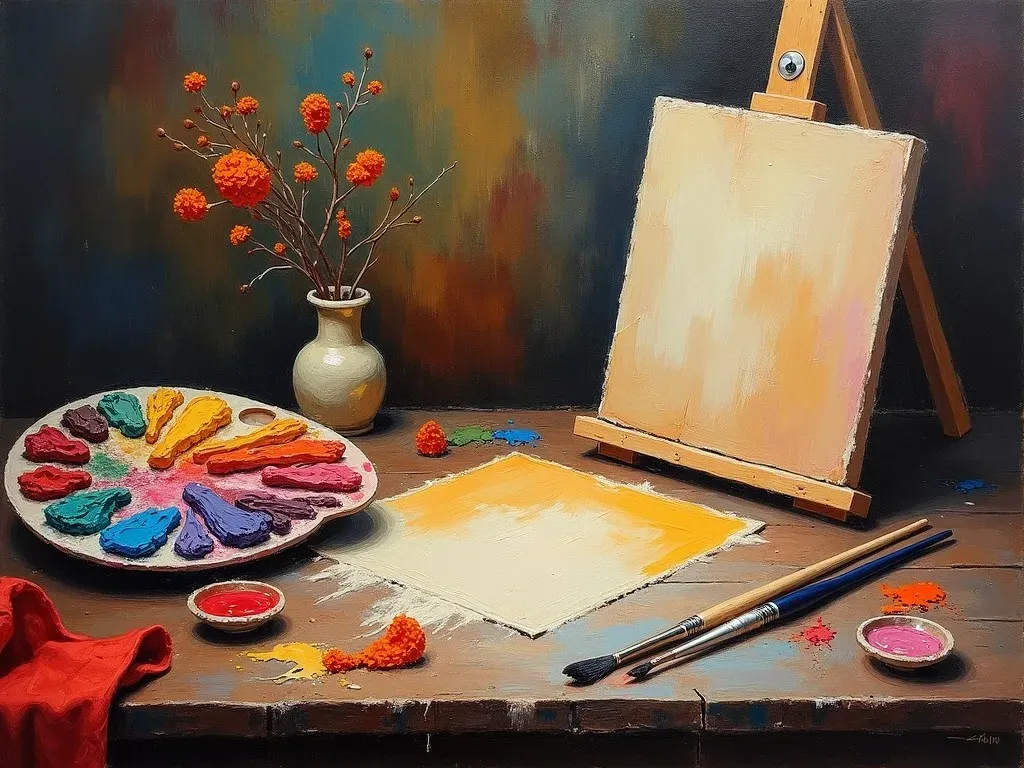Rembrandt oil paint is a high-quality product designed specifically for professional artists, offering an unparalleled range of 120 colors. This series is known for its maximum fineness, lightfastness, and durability, ensuring that artists can achieve stunning results in their work.
The Essence of Rembrandt Oil Paint
Rembrandt oil paints are crafted from the finest raw materials, utilizing Techniques that lead to vibrant colors and smooth textures. The brand is produced in Holland, and it is synonymous with quality craftsmanship. Each hue is carefully developed to meet the demands of artists who seek to bring their visions to life. With a buttery consistency and a unique ability to hold brush strokes, these paints enhance any artist’s palette.
Key Features of Rembrandt Oil Paint
- Color Range: 120 distinct colors, including both opaque and transparent hues.
- Lightfastness: Most colors boast a high degree of lightfastness, ensuring that artworks remain vibrant over time.
- Ease of Use: Smooth texture allows for easy blending and manipulation on the canvas.
- Professional Quality: Specifically designed for professional results, making it a favorite among artists worldwide.
Fact Table: Rembrandt Oil Paint Specifications
| Feature | Description |
|---|---|
| Color Range | 120 colors |
| Packaging Sizes | 40ml, 60ml, 150ml tubes with various sets available |
| Lightfastness | High (meets professional standards) |
| Consistency | Buttery texture, ideal for smooth brush strokes |
| Pigment Quality | Pure, extra fine pigments for rich color intensity |
Why Choose Rembrandt Oil Paint?
Many artists prefer Rembrandt oil paints due to their versatility and reliability. Whether creating fine art, illustrations, or elaborate canvases, the paints deliver excellent coverage and sophistication. An artist can trust that the colors will blend well and retain their vibrancy over time.
List of Advantages
- Versatile Application: Ideal for both direct painting and Plein Air techniques.
- Color Intensity: High pigmentation ensures that colors remain vivid and true.
- Compatibility: Works well with various mediums, allowing for mixed media projects.
- Value for Money: Though premium, the quality justifies the investment, as artists often find that a little paint goes a long way.
Reference Video
Popular Colors in the Rembrandt Range
For anyone venturing into the world of Rembrandt oil paint, here are some of the most popular colors that artists frequently choose:
| Color Name | Description |
|---|---|
| Cadmium Red | A rich and warm red tone |
| Cobalt Blue | Intense, vibrant blue with excellent lightfastness |
| Titanium White | A brilliant white, perfect for mixing |
| Yellow Ochre | Earthy, warm yellow ideal for landscapes |
| Lamp Black | Deep, rich black perfect for strong contrasts |
Notable Characteristics of Popular Colors
Most colors in the Rembrandt line showcase a smooth, buttery application that makes them especially user-friendly:
- Cadmium Colors: Known for their durability and vibrant finishes.
- Earth Tones: Versatile colors suitable for varied painting styles, including impressionism and realism.
User Guidance
Tips for Using Rembrandt Oil Paint
- Proper Mixing: For complex color blends, use a palette knife to properly mix oil paints for smooth application.
- Layering Techniques: Start with thin layers of paint and gradually build up for depth.
- Mediums: Experiment with different mediums to change the texture and drying times of the paints.
- Cleaning: Use odorless mineral spirits for cleaning brushes and palettes to preserve the quality of the paint.
Best Practices for Care and Storage
- Storage: Keep tubes tightly closed and store them in a cool, dark place to extend the life of the pigments.
- Shelf Life: Although oils have a longer shelf life compared to acrylics, it’s advisable to use them within a couple of years of opening.
Frequently Asked Questions
What makes Rembrandt oil colors different from other brands?
Rembrandt paints stand out due to their specific focus on professional-grade quality, offering pure pigments and a high degree of lightfastness that many brands may lack.
Are Rembrandt oil paints suitable for beginners?
While Rembrandt oils are often favored by professionals, their ease of use and high-quality results mean that beginners can also benefit from using them.
Where can I purchase Rembrandt oil paint?
Rembrandt oil paints can be found at several art supply retailers such as Blick Art Materials or directly from Royal Talens.
Do Rembrandt oil paints have a strong odor?
Most Rembrandt oil paints are low-odor, but it’s advisable to work in a well-ventilated area to minimize any scent and ensure a comfortable painting experience.
Conclusion: Embracing Creativity with Rembrandt Oil Paint
While illustrations and colors are essential for producing striking artwork, the choice of paint is equally important. Rembrandt oil paint is a testament to quality and craftsmanship, making it the go-to choice for artists dedicated to their craft. Whether you’re an emerging artist or a seasoned professional, Rembrandt paints promise to enrich your artistic endeavors.
With its harmonious blend of classic techniques and modern applications, Rembrandt oil paint lives up to its reputation by offering a premium experience for artists looking to create masterpieces.
